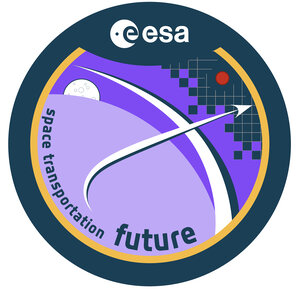Accept all cookies Accept only essential cookies See our Cookie Notice

About ESA
The European Space Agency (ESA) is Europe’s gateway to space. Its mission is to shape the development of Europe’s space capability and ensure that investment in space continues to deliver benefits to the citizens of Europe and the world.
Highlights
ESA - United space in Europe
This is ESA ESA facts Member States & Cooperating States Funding Director General Top management For Member State Delegations European vision European Space Policy ESA & EU Space Councils Responsibility & Sustainability Annual Report Calendar of meetings Corporate newsEstablishments & sites
ESA Headquarters ESA ESTEC ESA ESOC ESA ESRIN ESA EAC ESA ESAC Europe's Spaceport ESA ESEC ESA ECSAT Brussels Office Washington OfficeWorking with ESA
Business with ESA ESA Commercialisation Gateway Law at ESA Careers Cyber resilience at ESA IT at ESA Newsroom Partnerships Merchandising Licence Education Open Space Innovation Platform Integrity and Reporting Administrative Tribunal Health and SafetyMore about ESA
History ESA Historical Archives Exhibitions Publications Art & Culture ESA Merchandise Kids Diversity ESA Brand CentreLatest
Space in Member States
Find out more about space activities in our 23 Member States, and understand how ESA works together with their national agencies, institutions and organisations.
Science & Exploration
Exploring our Solar System and unlocking the secrets of the Universe
Go to topicAstronauts
Missions
Juice Euclid Webb Solar Orbiter BepiColombo Gaia ExoMars Cheops Exoplanet missions More missionsActivities
International Space Station Orion service module Gateway Concordia Caves & Pangaea BenefitsLatest
Space Safety
Protecting life and infrastructure on Earth and in orbit
Go to topicAsteroids
Asteroids and Planetary Defence Asteroid danger explained Flyeye telescope: asteroid detection Hera mission: asteroid deflection Near-Earth Object Coordination CentreSpace junk
About space debris Space debris by the numbers Space Environment Report In space refuelling, refurbishing and removingSafety from space
Clean Space ecodesign Zero Debris Technologies Space for Earth Supporting Sustainable DevelopmentLatest
Applications
Using space to benefit citizens and meet future challenges on Earth
Go to topicObserving the Earth
Observing the Earth Future EO Copernicus Meteorology Space for our climate Satellite missionsCommercialisation
ESA Commercialisation Gateway Open Space Innovation Platform Business Incubation ESA Space SolutionsLatest
Enabling & Support
Making space accessible and developing the technologies for the future
Go to topicBuilding missions
Space Engineering and Technology Test centre Laboratories Concurrent Design Facility Preparing for the future Shaping the Future Discovery and Preparation Advanced Concepts TeamSpace transportation
Space Transportation Ariane Vega Space Rider Future space transportation Boost! Europe's Spaceport Launches from Europe's Spaceport from 2012Latest

ESA links with Japan for speedy and secure communications
Thank you for liking
You have already liked this page, you can only like it once!
People will communicate up to a thousand times faster using high-capacity optical links between satellites, thanks to a partnership agreed today between the European Space Agency (ESA) and the Space Compass Corporation in Japan.
The two partners have announced plans to explore linking two optical communication networks that send light signals between satellites in orbit around Earth. Connecting the networks will pave the way for much faster data-intense transmission and more secure and reliable networks, boosting everything from internet access to space exploration.
The agreement involves linking two optical communication networks: ESA’s High Throughput Optical Network (HydRON) demonstration system and Japan’s LAIDEN network. HydRON aims to demonstrate the world’s first optical multi-orbit transport network in space, delivering internet speeds of terabits per second – thousands of times faster than many of today’s conventional connections. It will help to bridge digital divides and enable new possibilities in global communications.
Meanwhile the LAIDEN project overseen by Japan’s New Energy and Industrial Technology Development Organisation foresees launching a commercial satellite into a geostationary orbit and offering optical data relay services as part of this in-orbit demonstration.
The partnership will create a network that connects different orbital layers – including geostationary orbit, medium Earth orbit and low Earth orbit satellites – as well as ground stations. This comprehensive approach aims to build more resilient communication networks that could better serve both space and Earth-based applications.
The collaboration will progress through three key phases, starting with technical feasibility assessment, moving through the development of joint test protocols, and culminating in full system validation. This methodical approach ensures that the resulting network meets the highest standards of reliability and performance.
-
CREDIT
ESA -
LICENCE
ESA Standard Licence

HydRON: Fibre in the sky

HydRON Element #1 signature at IAC 2

ESA’s Space Systems for Safety and Security (4S) programme

Tracking downunder















 Germany
Germany
 Austria
Austria
 Belgium
Belgium
 Denmark
Denmark
 Spain
Spain
 Estonia
Estonia
 Finland
Finland
 France
France
 Greece
Greece
 Hungary
Hungary
 Ireland
Ireland
 Italy
Italy
 Luxembourg
Luxembourg
 Norway
Norway
 The Netherlands
The Netherlands
 Poland
Poland
 Portugal
Portugal
 Czechia
Czechia
 Romania
Romania
 United Kingdom
United Kingdom
 Slovenia
Slovenia
 Sweden
Sweden
 Switzerland
Switzerland
























